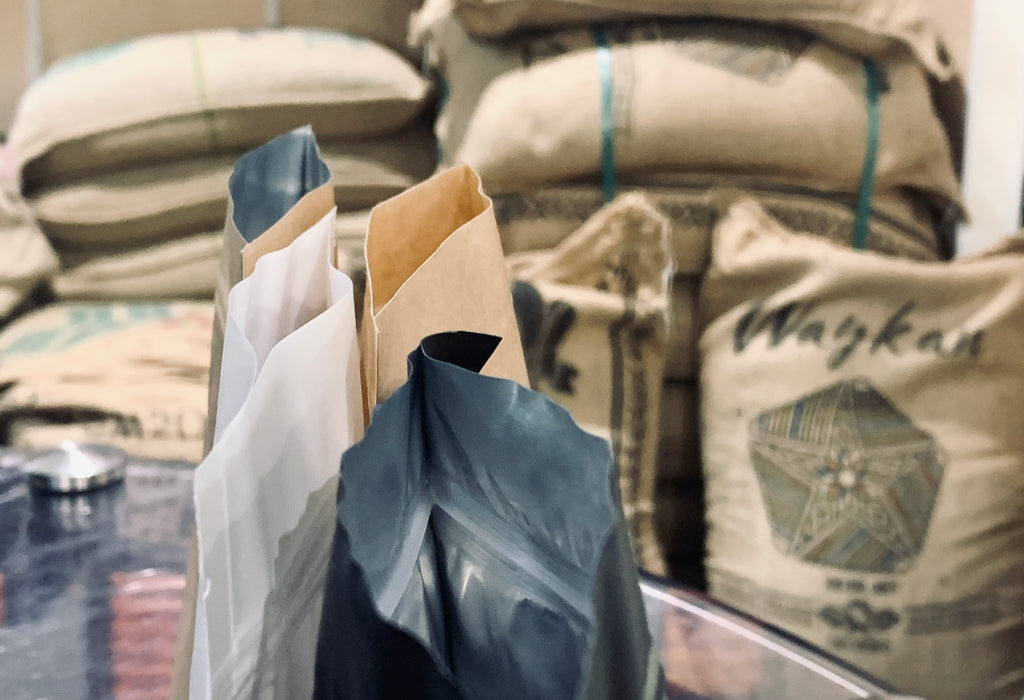How to properly recycle our coffee packages? There are short and long answers to the question. Starting with the short ones, more details at the end of the article.
Lehmus Roastery offers three types of bags. The most common is a combination of cardboard surface and a layer of plastic. The second most common is a completely white plastic package. The third, and continuously diminishing option, is the traditional bag with a thin aluminum layer under the cardboard surface and a thin layer of plastic underneath. Here are the instructions:

Brown packaging containing both plastic and cardboard, with a non-glossy inner surface: Recycle in plastic recycling

White packaging containing plastic: Recycle in plastic recycling.

Packaging containing aluminum, with a glossy inner surface: Dispose in mixed waste/energy waste.
But then, in more detail...
A pouch containing aluminum can be recycled as cardboard, plastic, metal, or energy waste.
In principle, the rule of thumb is that the packaging is recycled as the type of waste that predominantly corresponds to the material it seems to contain the most. Plastic bags go into plastics, cardboard-surfaced ones into cardboard, and so on.
Therefore, theoretically, a brown kraft-paper-surfaced pouch can be recycled as cardboard, plastic, metal, or utilized as energy waste. We could recommend recycling the package as cardboard, as it might sound more environmentally friendly, but then we wouldn't be honest with ourselves.
Here's why: as long as there are multiple layers involved, the packaging is best utilized as energy when incinerated. If our pouch were recycled as cardboard, the entire package wouldn't break down into cardboard pulp. Instead, part of the package would remain as waste, and it would still be transported to an incineration facility. The same goes for plastic: our packages have a plastic layer protecting the coffee beans, but since it's not purely plastic waste, the package would eventually end up at the incineration facility rather than the plastic recycling plant.
On the other hand, if the package were recycled as metal, its final disposal would still be at an incineration facility.
When the coffee package is directly sorted as energy waste (i.e., mixed waste), it reduces the need for transportation between these different waste processing facilities, thereby saving on emissions from transportation.
A package containing plastic can be sorted as plastic, cardboard, or energy waste

And what about our other bags, or in general, the plastic bags used by many small roasteries – how should they be recycled? If the pouch is 100% plastic and has no labels attached, you can confidently sort the package into plastic waste. As an example, consider the winter season favorites, the Kettu coffees packed in a white pouch with printed material on its surface.

However: if the package has a label, the package is practically considered energy waste or mixed waste, as the paper label "contaminates" the plastic and it is no longer pure plastic. In this case, the most sensible option is to sort the pouch as energy waste.
Not entirely straightforward, but interesting!

